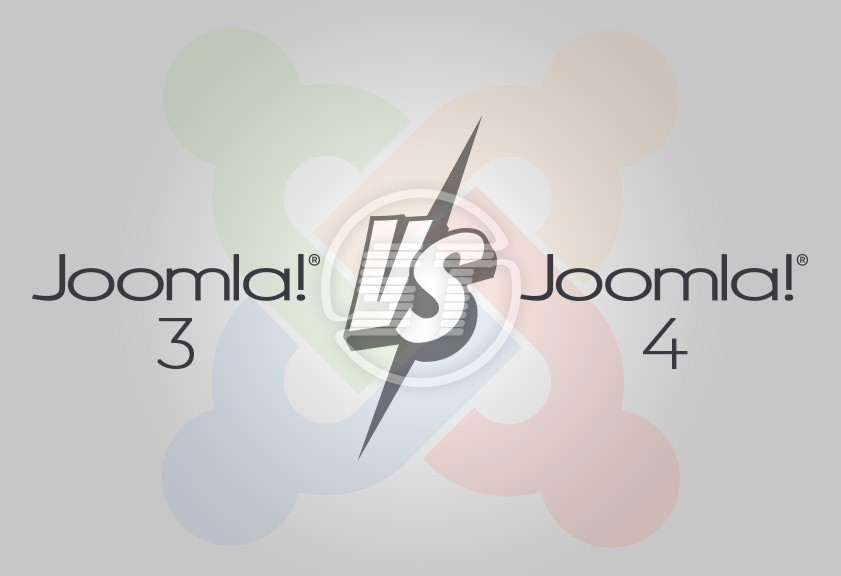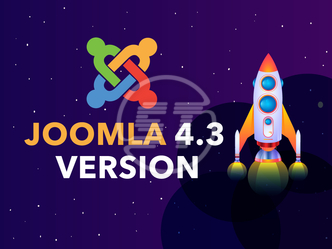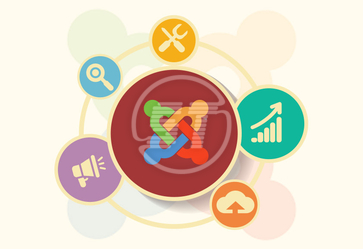Joomla is serving organizations for a longer span. Joomla 3 and 4 both versions are existed. Though there are myriad noticeable differences between these two versions that influence a website’s performance.
The latest versions are meant for new market requirements. Therefore, Joomla 4 has features that you might need to meet your current business needs. Thus, if your website is running on Joomla 3, better to migrate it to Joomla 4. And before that, you must know the differences between these two versions of Joomla.
Joomla 3.x vs Joomla 4 – All major differences
1. Use of Bootstrap 2 and Bootstrap 4
To build responsive mobile-friendly website Bootstrap is one of the popular frameworks with Bootstrap CDN and template starter pages. The cherry on top is, that Bootstrap is a front-end framework, which is free to use. And Bootstrap assists in a faster and easier web development process.
Joomla 4 has new Bootstrap 4 integration whereas Joomla 3 has Bootstrap 2 incorporation, and since Bootstrap 4 is newer than its version 3, it has much improved features and the latest templates for a better user interface. No doubt, why Joomla 4 offers much more responsive and better mobile-friendly websites.
2. Layout’s responsiveness
The layouts in Joomla 4 are made using the latest technologies to increase the responsiveness of layouts. Though Joomla 3 has a responsive grid system, developers face difficulties while implementing the designs. The grid creates trouble in the setup of designs.
Moreover, Joomla 4 has replaced 12 column layout system and included the CSS grid. This change is helpful in development.
3. Design framework LESS and SASS
Joomla has CSS extensions in a programming language to make the code organized and clean, which ultimately improves the overall development process.
Joomla 3 got integrated with Bootstrap 2, thus, it was developed with LESS (Leaner Style Sheets). It is a dynamic stylesheet built on JavaScript. Whereas Joomla 4 has integration with Bootstrap 4 (as mentioned above), which is based on SASS (Syntactically Awesome Style Sheets) based on Ruby.
Although both versions have CSS power and they both do very well. However, according to many developers, SASS is more powerful than LESS. Therefore, Joomla 4 is the choice of many.
4. Default front-end templates
When you compare Joomla 3 and Joomla 4 front-end templates, you will not need any other point to understand which is better version. Joomla 4 front-end designs are more elegant and cleaner than Joomla 3 designs.
Joomla 4 has one default front-end template which is Cassiopeia and because this template is developed on Bootstrap 4 and implemented on a CSS grid, the upshot is saying it all.
5. Default backend template
In Joomla 4, there are many back-end changes happened. The biggest change is the position of the menu. The back-end template interface has been updated as well.
Joomla 3 keeps the menu horizontal, and Joomla 4 has changed it to vertical. Joomla 3 has two default back-end templates – Hathor and Isis.
Joomla 4 has a new backend template that is Atum that has an improved user interface and features like a new publishing workflow.
6. Media manager and its editing feature
Previously media manager in Joomla does not have an editing feature, which was troublesome for developers. Thus, the Joomla community felt the need for an editing feature in the media manager and included this feature in Joomla 4.
It has ‘smart innovation’ in the media manager, which has an integrated editing feature. This feature helps you to upload images while you can read the properties of every image by clicking on the picture.
In Joomla 3, you do not get the editing feature with the media manager. Thereby, you need to edit the image before you upload it. On the other hand, Joomla 4 has many new features in the media manager, such as supporting multiple file uploads, drag and drop uploading, cropping, resizing, rotating, and renaming the image.
7. Installation process
Joomla 4 installation process is much simpler than its previous version.
Joomla 3 has three main steps to install it – the main configuration, integrating database, and overview. Joomla 4 has these three steps as well but with this version, you can go back to the previous information without interrupting the installation process and can submit the recent changes you have made.
8. PHP requirement
PHP is the main programming language of Joomla; and Joomla 4 has been developed with the latest PHP version, hence you get performance and security improvements.
Joomla 3 needs PHP 5.3+, however, Joomla 4 needs PHP 7+ version. And you know the latest PHP has myriad amazing features, such as Abstract Syntax Tree, Null Coalesce Operator, and many more.
9. Mootools and jQuery
Joomla 3 supports Mootools and jQuery libraries; though they are slow and do not get frequent updates. Therefore, Joomla 4 removed Mootools to fine-tune the overall performance of the platform. jQuery is being rewritten by the Joomla team in vanilla JS and they have decided not to load jQuery with core files. They are moved to custom elements that will be completely accessible at any time you want.
10. Code optimization
Joomla 4 is not only the latest but the best version of Joomla. It has got all the vogue integration, for example, jQuery 3, PHPMailer 6.0, VueJS for media manager, and Bootstrap 4. These powerful integrations make Joomla 4 a robust, well-optimized, and user-friendly version.
11. Security
Every content management system focuses on the security of the platform and makes sure a sturdy security system. So as Joomla did in the latest version. Joomla 4 has ensured the highest level of security.
Joomla 3 has many security issues and still updating & fixing the problems, but Joomla 4 has several newly added security features, and that too built using the latest technologies, which ensure that the platform has tightened the security level.
Wrapping up
It is evident that Joomla 4 is more efficient and secure than Joomla 3. Since the latest version has been developed using all the modern technologies, it has increased the quality and performance level of this CMS. Thereby, it is recommended to upgrade your website to Joomla 4, if not yet upgraded.
To reach a new level of success, you need a more elevated and evolved version of the technology. Joomla 4.0 brings a major upgrade to the CMS and is power packed with the latest features. Switching to Joomla 4.0 is undoubtedly a wise and prudent move. We at Skynet Technologies provide cutting edge Joomla development services including design, development, customization, migration, upgrades, support, maintenance, and much more. We guarantee that your websites and applications are secure, cross-platform compatible, and performance-optimized. Feel free to get in touch with us via email at hello@skynettechnologies.com or submit the following form to know more.


